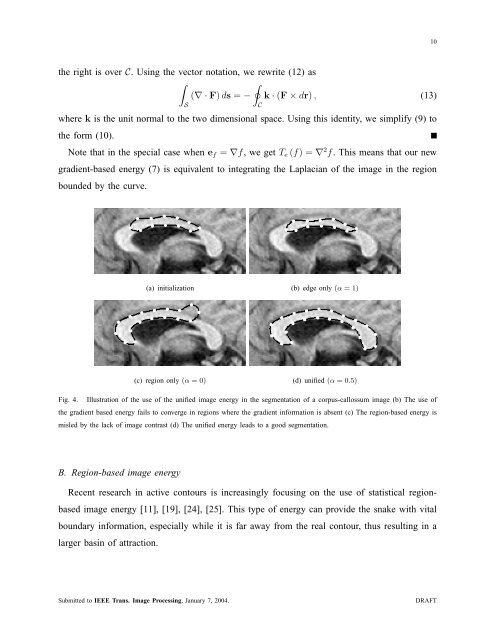Efficient energies and algorithms for parametric snakes - EPFL
Efficient energies and algorithms for parametric snakes - EPFL
Efficient energies and algorithms for parametric snakes - EPFL
Create successful ePaper yourself
Turn your PDF publications into a flip-book with our unique Google optimized e-Paper software.
10the right is over C. Using the vector notation, we rewrite (12) as∫∮(∇ · F) ds = − k · (F × dr) , (13)SCwhere k is the unit normal to the two dimensional space. Using this identity, we simplify (9) tothe <strong>for</strong>m (10).Note that in the special case when e f = ∇f, we get T e (f) = ∇ 2 f. This means that our newgradient-based energy (7) is equivalent to integrating the Laplacian of the image in the regionbounded by the curve.(a) initialization (b) edge only (α = 1)(c) region only (α = 0) (d) unified (α = 0.5)Fig. 4. Illustration of the use of the unified image energy in the segmentation of a corpus-callossum image (b) The use ofthe gradient based energy fails to converge in regions where the gradient in<strong>for</strong>mation is absent (c) The region-based energy ismisled by the lack of image contrast (d) The unified energy leads to a good segmentation.B. Region-based image energyRecent research in active contours is increasingly focusing on the use of statistical regionbasedimage energy [11], [19], [24], [25]. This type of energy can provide the snake with vitalboundary in<strong>for</strong>mation, especially while it is far away from the real contour, thus resulting in alarger basin of attraction.Submitted to IEEE Trans. Image Processing, January 7, 2004.DRAFT
















